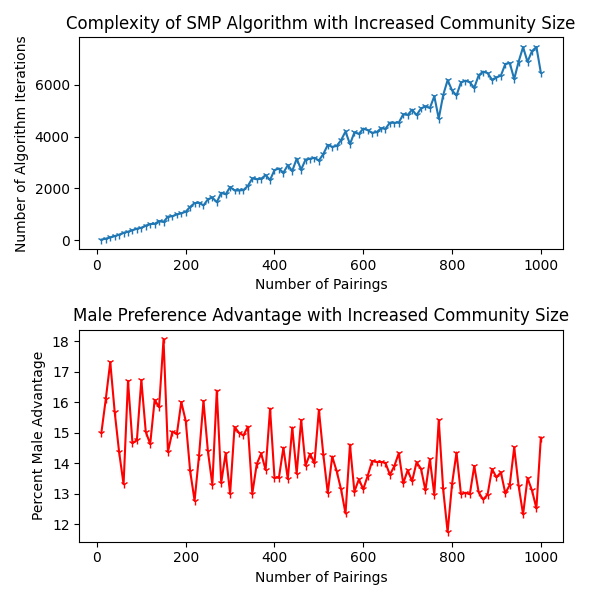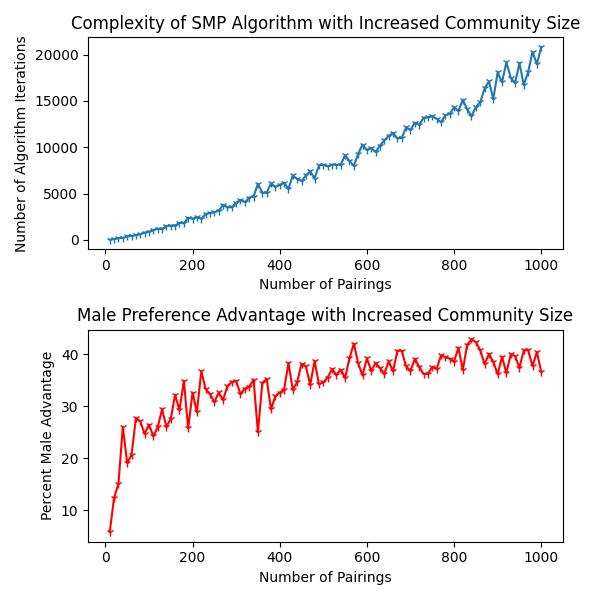This repo attempts to implement the classic algorithm to the Stable Marriage Problem and other variants.
More information can be found on my blog post.
- /classic
- stable_marriage_problem_classic.py
- This file implements a
Communityobject which represents the actors and algorithm in the SMP - In root directory, run:
python3 -m classic.stable_marriage_problem_classic
- This file implements a
- simulations.py
- This is the file to execute in order to run some simulations of the algorithm
- Adjust the values in
main()to tweak executions of the simulation - In root directory, run:
python3 -m classic.simulations- Executing the code as is should produce the following graph:
- stable_marriage_problem_classic.py
- /distribution
- stable_marriage_problem_distribution.py
- This file implements a
Communityobject which represents the actors and algorithm in the SMP, but applies a normal/pareto asymmetry in preferences between men/women - In root directory, run:
python3 -m distribution.stable_marriage_problem_distribution
- This file implements a
- simulations.py
- This is the file to execute in order to run some simulations of the algorithm
- Adjust the values in
main()to tweak executions of the simulation - This is pretty much the same code as the
simulations.pyin the/classicpackage - In root directory, run:
python3 -m distribution.simulations- Executing the code as is should produce the following graph:
- stable_marriage_problem_distribution.py
-
Different distributions and analyzing the asymmetry
- Currently only the normal/pareto distributions were analyzed
- How would advantage be affected with different distribution parameters (e.g. Different alpha values for pareto)
- How would advantage be affected with different distributions entirely (e.g. Poisson)
-
"Subgroup" preference
- As a community grows larger, there are usually smaller subgroups formed (e.g. neighborhoods in Manhattan)
- With this in mind, we can tweak the preference lists to favor proposals within one's subgroup, even if there are more "attractive" people in another subgroup
- Subgroups would most probably be formed by analyzing the distribution of subgroup populations

